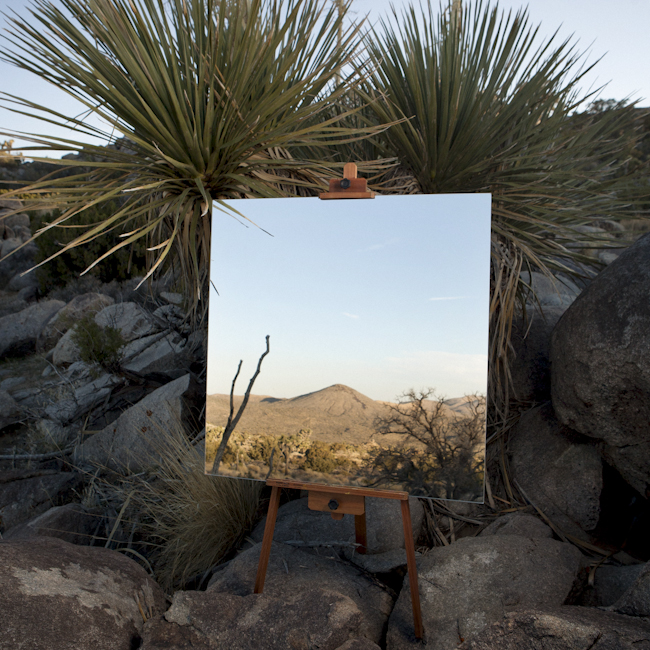The Edge Effect
"In March of 2012, I was awarded an artist's residency by the United States National Park Service in southern California’s Joshua Tree National Park. While staying in the Park, I spent much of my time visiting the borderlands of the park and the areas where the low Sonoran desert meets the high Mojave desert. While hiking and driving, I caught glimpses of the border space created by the meeting of distinct ecosystems in juxtaposition, referred to as the Edge Effect in the ecological sciences. To document this unique confluence of terrains, I hiked out a large mirror and painter’s easel into the wilderness and captured opposing elements within the environment. Using a single visual plane, this series of images unifies the play of temporal phenomena, contrasts of color and texture, and natural interactions of the environment itself."
Glacial Rebound
As contentious debate on the impact of global warming drives on, something unique is occurring in the coastal areas of Alaska. Rather than rising sea levels and diminishing coastlines, the land in southeast Alaska is rising out of the ocean at an accelerated rate. This phenomenon is known as post-glacial rebound or isostatic adjustment, and is a direct result of global warming. The region was once covered by vast glaciers and ice fields, which massively deformed and submerged the coastal landscape. As global temperatures rise, the weight of glacial ice is rapidly melting away, and previously buried land is bursting forth into view.
This series is composed of photographs of the extant Alaskan landscape paired with photo-sculptural pieces representing the nascent landscapes to come. The photo-sculptural pieces were created through manipulating silver gelatin emulsion paper and sculpting it into rough approximations of the existing underwater topography. Dry chemistry was then applied directly to the emulsion and washed over with water; as the water flows around ridges and through valleys, it simulates trails and pools that are reminiscent of glaciers, glacial melt waters, silt deposits and the new risen muddy tidal flats.
This project serves as a reminder that the world often fails to conform to our polarized understanding of human-environmental interaction. As political battles rage over the possibility of coastal inundation, these pieces speak to the complexity of the natural world. The contrast of the potential topographies of the future with the natural landscapes of the present challenges the simplified arguments on both sides of the climate change debate. The pieces seek to expand the discourse, while grounding it in the concrete and complex reality of our Earth.
This series is composed of photographs of the extant Alaskan landscape paired with photo-sculptural pieces representing the nascent landscapes to come. The photo-sculptural pieces were created through manipulating silver gelatin emulsion paper and sculpting it into rough approximations of the existing underwater topography. Dry chemistry was then applied directly to the emulsion and washed over with water; as the water flows around ridges and through valleys, it simulates trails and pools that are reminiscent of glaciers, glacial melt waters, silt deposits and the new risen muddy tidal flats.
This project serves as a reminder that the world often fails to conform to our polarized understanding of human-environmental interaction. As political battles rage over the possibility of coastal inundation, these pieces speak to the complexity of the natural world. The contrast of the potential topographies of the future with the natural landscapes of the present challenges the simplified arguments on both sides of the climate change debate. The pieces seek to expand the discourse, while grounding it in the concrete and complex reality of our Earth.







0 comments:
Post a Comment